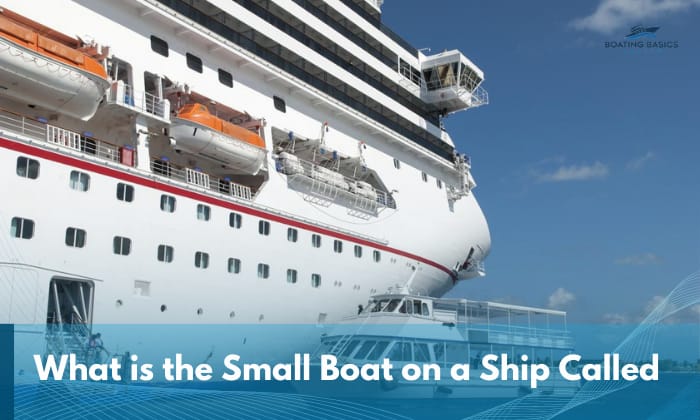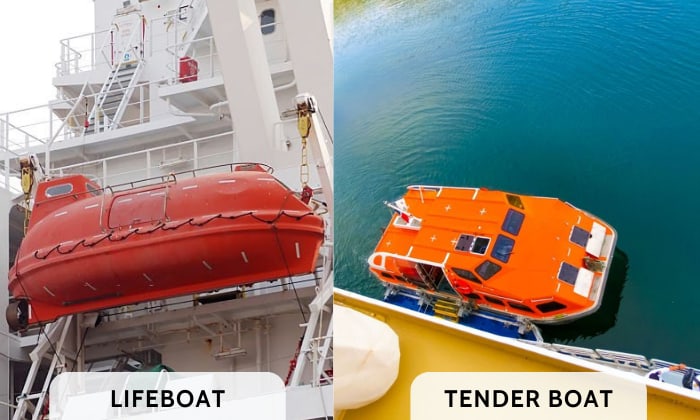For all their sheer majestic size, it’s not at all a surprise that we can never really run out of things to talk about with regard to what they can carry. For one, the concept of a “boat within a boat” can catch any curious soul’s fancy.
So, what is the small boat on a ship called? It depends on the purpose. However, if we’re talking about the most common small-sized vessel, then it’s called a “tender.” Other boats that can fit this description include dinghies and lifeboats.
Table of Contents
Unveiling the Intricacies of Small Watercrafts on Ships
Most of the terms above belong to modern-day vessels. But what if we peer at naval history a bit? Well, we’re going to find that a small boat with different names isn’t exactly a rare thing.
Back in the Age of Sail, a small auxiliary vessel carried on most ships would be called a “launch”. More sophisticated forms of it would be called the Captain’s Yacht.
It’s sophisticated in the sense that it offers more luxuries but is still mainly used for convenient personal transportation by the captain of the ship. These luxuries have made their way to modern tender boats, as evidenced by their inclusion of amenities.
Moreover, just look at the term such a watercraft on a pirate ship: a jolly boat. It was used to transport people and supplies to the shore and back to the ship. Many sailors used it for surveillance, inspection, and other minor marine activities.
Other than its more casual purpose, that definition is not much different from the actual function of a tender boat on a yacht at present. Simply put, it’s a small boat that takes you to shore.
I can say the same for your average dinghy boat, which many agree is just another name for a tender boat, only the former is often a larger version of the latter.
Incidentally, some sailors affectionately call these smaller boats “junior.” Just a heads-up if you happen to encounter the term in boating circles.
Lifeboat vs Tender Boat
Now that we’ve established that most of these terms are more or less synonymous with one another, it’s time to address the elephant in the room: the humble but ever-useful lifeboat.
Surely, they don’t fall in the same category even though they’re arguably small boats that most ships carry? I suggest you read its comparison to a tender boat, which I prepared below.
- A lifeboat counts mainly as a “survival watercraft”. This means it’s a boat that you should only use in times of emergency. It can’t be used to ferry passengers and supplies ashore if there’s no immediate danger involved (i.e. regular port calls).
- A tender fulfills that transportation function, often when the ship is anchored offshore. It often has more space to accommodate more passengers and may offer amenities like toilets and air conditioning.
That doesn’t necessarily mean that they compromise safety as they also come equipped with life vests and even smaller life rafts, which can be quickly deployed should the need arise.
Despite the obvious difference between the two, it has to be said that certain small boats aboard a ship do count as both lifeboats and tenders at the same time.
This hybrid type is often larger than your lifeboat, even though it may still be called as such. It’s entirely allowed to transport passengers from ship to shore and vice versa.
Conclusion
Overall, there’s certainly more than one name for a small boat, and having been in the marine industry for years, I’m not at all surprised. Naval terms are as rich as the history that is the foundation of the industry’s lingering traditions.
Who knew that diving a bit into “What is the small boat on a ship called?” could merit such deep musings and a yearning for more learning in me? I hope I was able to inspire the same for you.
But if you’re an old salt at heart and a sage thirsty for knowledge at the same time, you’ll, without a doubt, understand.

“My intention from the first day establishing Boating Basics Online is to provide as much help as possible for boaters who want to experience a first safe and convenient trip. So feel free to join us and share your beautiful journeys to the sea!”



